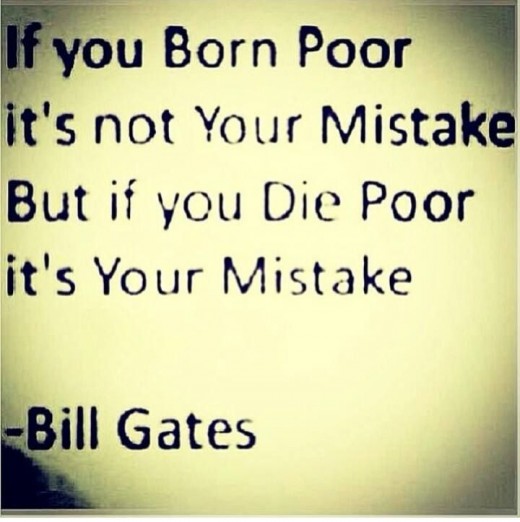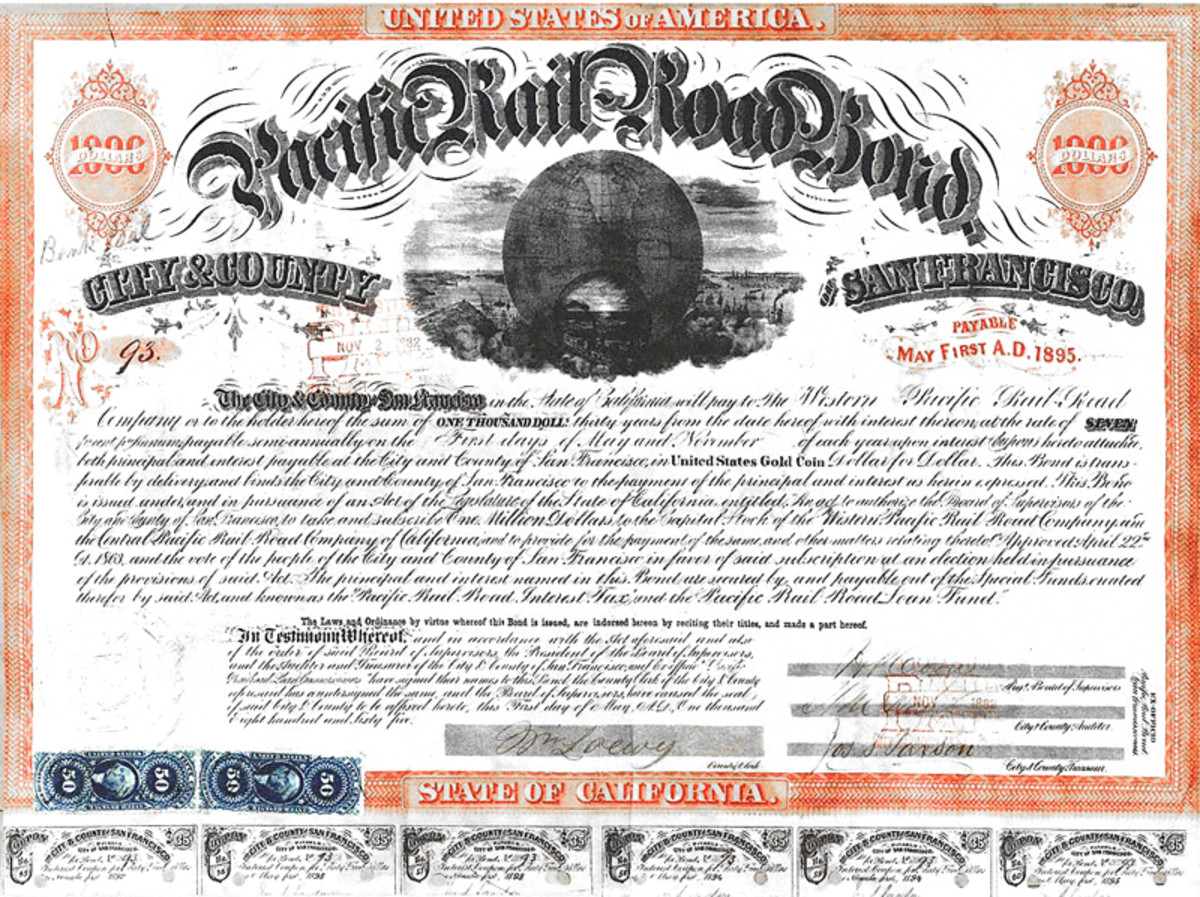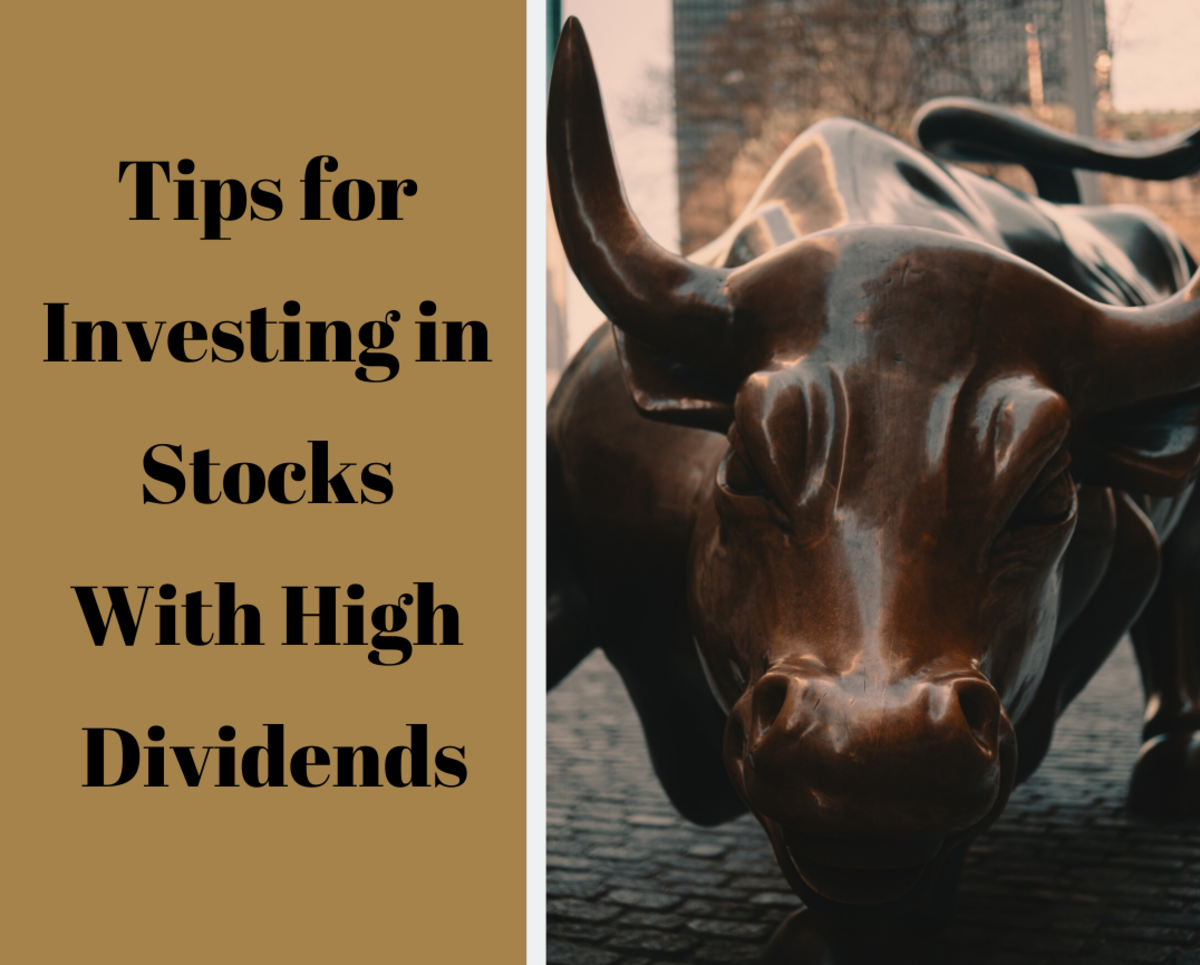Anyone Can Become A Millionaire In America
Mr. Earl, Super Saver
The Late Ronald Read Left A $8 Million Fortune
How A 92 Year Old Janitor Made $8 Million Fortune/CNBC
The Wisdom of King Solomon On Wealth Building

Building Wealth Over Time Strategy
It is simply amazing to think about the wisdom on wealth building that is contained within the Word of God. Of all the Bible writers, King Solomon was renown for his considerable wisdom and knowledge on the subject matter (see Proverbs 13:11). Solomon stated in his proverbs that wealth easily acquire (i.e., lottery winnings) built over time is greatly appreciated and in most case carefully preserved. Both Mr. Earl Crowley and the late Ronald Read in effect can be viewed as disciples of King Solomon's teachings. Both of these men used the same investment vehicles to amass their small fortunes They used high yielding dividend paying stocks of established public corporations.
The Importance of DRIP's In Wealth Building Over Time
DRIP's are an acronym for "direct stock purchase and dividend reinvestment plans". They are a cost-effective way for the public to acquire the stocks of public corporations without using a middleman like a stockbroker. The general public can directly go to these public corporations by way of a transfer agent (i.e., third-party administrator) and buy their stocks. A popular transfer agent is "Computershare" (www.computershare.com). They administer the largest number of public corporation direct stock purchase and dividend reinvestment plans (DRIPs). Believe it or not, this is an effective way to acquire stocks because the transfer agents' commission fees are generally one-tenth (1/10/) that of the stockbrokers. There are roughly eight to ten thousand (8,000 to 10,000) public corporations that offer direct stock purchase and dividend reinvestment plans. Potential investors are allowed to acquire in most case a minimum of fifty ($50.00) worth of stock each month. Potential investors are given the option of reinvesting dividends or taking a payout. Potential investors are able to reinvest dividends at virtually no cost (i.e., the corporations in most cases pay the transfer agents fees for any reinvestment transactions). DRIPs work extremely well with time horizons of three to twenty (3 to 20) time horizon. There are a number of websites that cater to and help potential investors in their efforts to invest without stockbrokers (see "www.dripinvestor.com").
The Magic of Compounding or Compound Interest
Many have asked over the years why direct stock purchase and dividend reinvestment plans (DRIPs) work so well and make millionaires so quickly? It is a great question to ask, and the answer will not surprise you. It works wells because of the power of compounding, and the frequency of compounding. In other words, compounding is good, but the rapid frequency of compounding is even better. Thus, investors prefer investment vehicles that pay dividends monthly as opposed to quarterly or even annually (simple interest in most cases from the banks and credit unions). The frequency of the compounding tends to give rise to what investors call geometric growth in the value of the DRIP account. Thus, it is not inconceivable for the entire account value to literally double every two to three years, depending on the effective dividend yield and capital appreciation (see Rule of 72). Value stocks (i.e., those that pay a consistent dividend) tend to provide this effect on an investor account.
Overcoming the FEAR of the Stock Market By Understanding Its Dynamics
The number one fear of investing in the Stock Market is that potential investors are worried about losing their capital (initial investment). This fear is exaggerated by banks, insurance company, friends and others. Bankers simply play on potential investors fears by reminding them that they would invest in very risky assets which are not federally insured by the FDIC. Thus, they are able to lure potential investors' monies into their passbook savings and CD accounts where they pay ridiculously low rates, and in some cases less than one (1) percent per annum. Potential investors do not think about the Rule of 72 when dealing with bankers. The FEAR of the Market can be easily overcome with a little investment education. FEAR is nothing but "False Evidence Appearing To Be Real" (Actor Gary Busey). The Stock Markets fluctuations are dictated by the natural market forces of supply and demand. If the demand is high for a particular stock given its limited or given supply, then the price of the stock will move higher. In other words, if there are more buyers demanding the stock, and fewer investors selling the stock, the price will move higher. By the same token on any given day there may be more investors selling the stock, and adding back to the given supply. In this situation downward pressure is applied to the stock and the price tends to fall. In general, this is called "Market Risk", and every investor accepts it as a given risk associated with investing in stocks. The other common risk associated with stock is a company-specific risk. This is the risk that pertains specifically to a company of the underlying stock. A good example of company-specific risk would be the sudden resignation of the chief executive officer (CEO) because of fraud, or something more sinister. Once that information becomes public news, the stock price in all likelihood would decline because investors would start to sell off the stock. Thus, it behooves potential investors to thoroughly vet any stock that they may want to buy at any given time. There are good stocks (generally called "blue-chip:) and bad stocks in the Market.
Using Market Experts or Resources To Mitigate Risks In the Market
Despite extensive education on investing in the Stock Market, potential investors could still experience loss of capital if they lack the market experience to avoid unsafe stocks. Thus, it is only logical for potential investors to use established experts and resources which can provide insight and knowledge about risk assets. There is a number of experts and resources online. One of the practical online resources is "Investor Business Daily" (www.investorbusinessdaily.com). Investor Business Daily uses its proprietary system called SmartSelect to vet stocks. The system identifies six attributes and assigns a checklist of go (green), stop (red) and caution (yellow) for each stock in the Market. The system is very effective because potential investors are familiar with stop-go and caution system. It is a traffic light system which they encounter every day.
The IBD Smart Select System of Stock Evaluation
IBD Ratings for Apple,Inc.(AAPL)
| Rating
| Checklist
|
|---|---|---|
Composite Rating
| 90 (out of 99)
| Yellow (Caution)
|
EPS Rating
| 90 (Out of 99)
| Green (Go)
|
RS Rating
| 86(out of 99)
| Green (Go)
|
Group RS Rating
| -C (out of A+)
| Yellow (Caution)
|
SMR Rating
| A
| Green (Go)
|
ACC/DiS Rating
| C
| Yellow (Caution)
|
Stock/Company Data for Apple, Inc.
Stock Data
| Stock Data
|
|---|---|
Today's Range
| 171.12-174.26
|
52-Week Range
| 104.08-174.26
|
Price % Change YTD
| 48.94%
|
Price % Change Last 4 Weeks
| 9.88%
|
50-Day Avg. Volume
| 29,080,100
|
Shares Outstanding
| 5165.2 Mil
|
Float
| 5113.6 Mil
|
Initial Public Offering Date
| 12/12/1980
|
Investment Bank
| Morgan Stanley
|
% of Management Ownership
| 1%
|
PE Ratio
| 19
|
Dividend Yield
| 1.5%
|
Alpha
| 0.08
|
BETA
| 1.2X
|
Apple, Inc Company Fundamentals
Company Fundamental
| Description/Quantification
|
|---|---|
EPS Due Date
| 01/29/2018
|
EPS % Change (Last Qtr)
| 24%
|
3 Year EPS Growth Ratre
| 6%
|
EPS Est% Change (Current Yr)
| 21%
|
Annual Return On Equity
| 36.87%
|
Sales % Change (Last Qtr)
| 12%
|
3 Year Sales Growth Rate
| 4%
|
Debt To Equity Percent
| 59%
|
Market Capitalization
| $891.00 Billion
|
Profit Margin
| 28.5%
|
Sector
| Telecommunication/Internet
|
Industry Group
| Telecom-Consumer Products
|
Industry Group Rank
| 120
|
Understanding What Smart Select Categories Mean
"With more than 5,500 stocks trading on U.S. exchanges, searching for a winning investment candidate could be a daunting - and time-consuming - endeavor. Unless you have the right tools. The IBD SmartSelect® Ratings do some of the heavy lifting for you. The unique ratings were designed to help both new and seasoned investors find the best stocks faster. The ratings measure a company's key characteristics, like earnings growth, profit margins, share price performance and other traits. They also show you how the stock compares to others in the market. These powerful ratings can help you size up a stock at a glance: • Composite Rating rolls all of the other IBD SmartSelect® Ratings mentioned below into one useful measure, making it your single most useful fundamental and technical gauge. This rating also factors in where a stock's share price stands in relation to its 52-week high. And it gives more weight to the stock's EPS and Relative Price Strength ratings. o Ratings range from 1 to 99, with 99 being the best. o Stocks rated 80 or higher are in the top 20% of the overall market. • Earnings Per Share Rating (EPS) compares a company's recent quarterly and annual earnings to those of other publicly traded firms. Specifically, it looks at the past two quarters and the past three to five years of profit growth. That makes it easier to assess a firm's short- and long-term earnings growth. o EPS Ratings range from 1 to 99, with 99 being the best. • Relative Price Strength Rating (RS) compares a stock's price change during the past 12 months to the price moves of other stocks. It gives extra weighting to a stock's price performance during the past three months. o RS Ratings range from 1 to 99, with 99 being the best. • Sales + Profit Margin + ROE Rating (SMR® ) combines a company's recent sales growth, profit margins and return on equity, then compares them to other publicly traded companies. It's also known as the SMR® Rating. o SMR® Ratings range from A to E, with A being the best. • Accumulation/Distribution Rating (ACC/DIS RTG® ) tracks the level of buying (accumulation) and selling (distribution), based on daily price and volume changes. It's one of the best ways to spot stocks of interest to big, institutional investors. o Accumulation/Distribution Ratings range from A+ to E, with A+ being the best. An A Rating indicates heavy buying; an E indicates heavy selling. • Industry Group Relative Price Strength Rating compares the six-month price performance for a stock's industry group with that of IBD's 197 other industry groups. o Runs from A to E, with A being the best.
"Say you spot a stock with a 90 Earnings Per Share Rating. That tells you that it's outperformed 90% of the other stocks in the market in terms of earnings growth. The Composite and Relative Strength Rating work in a similar manner. And those combined metrics let you easily evaluate a stock's importance and standing in the market.
"But don't buy a stock simply because it has high ratings. Use the SmartSelect® Ratings as a starting point. They give you an overall idea of a stock's quality. Be sure to check the earnings and sales growth history for a deeper understanding of the stock's strength" (Excerpted from Chapter 1-IBD SmartSelect Ratings-Using IBD SmartSelect Ratings)
"Understanding Investor's Business Daily's Stock Rating System"
I came across an excellent article on IBD Stock Rating System by E Coggins. The article was written about six years ago, but quickly explains the system in easy to understand language. A potential investor should read this short article and visit the IBD website before investing in any stock.
REITs or Real Estate Investment Trusts Are Special Stocks
Real Estate Investment Trusts or REITs are special risk assets that Congress created back in the mid-60's. These stocks are required to pay out up to ninety percent (90%) of their net income or profits to their shareholders or pay excise taxes to the Internal Revenue Service (IRS). Thus, REITS tend to pay out a substantial amount of dividends. Many REITs have double-digit dividend yields. REITs tend to invest in relatively safe investment vehicles and they do carry risk factors or BETAs lower than most other stocks. A good DRIP portfolio should have at least one REIT.
What Are Real Estate Investment Trusts (REITs)
"Don't Fall For Get Rich-Quick Schemes....'

Too Many Americans Look To Games of Chance, and/or Gambling To Acquire Wealth
It is a fact that too many Americans would rather play games of chance (lotteries) in an effort to get rich fast. The rise of the various state lotteries has made it extremely convenient for those who simply refuse to engage in financial planning. Too many simply cannot look beyond today or the present. Lotteries provide false hope and a false sense of future financial security. Lotteries' victims are the poor, the uneducated, the ignorant, and those Americans who are simply too indifferent, and or lazy when it comes to planning to achieve their financial futures.
Too Many Americans Rely Upon Social Security
Social Security came out of the"Great Depression" of the 1930's. It was designed to provide up to fifteen percent (15%), not one hundred (100%) of Americans retirement benefits. However, many Americans after working for thirty plus years are not ready for retirement because of their failure to account for the remaining eighty-five percent (85 %) of retirement benefits. Many have 401(K) plans and IRA's but many of these plans are not adequately funded. In addition, a significant number of American will soon retire (between 2020 and 2025). This number of retirees will put a considerable strain on the social security trust funds. Thus, it is possible that the Social Security Administration (SSA) will have to disqualify potential retirees or implore the Congress to provide the necessary funding. Also, it should be pointed out that the social security trust funds are owed approximately $2 trillion dollars by the federal government. These monies were borrowed by various administrations to fund the Iraqi and Afghanistan Wars during the periods 2003 to 2015.
Bill Gates Wisdom

Investment Strategy That Builds Wealth
A simple investment strategy that seems to work overtime is one in which a potential investor consistently invests a given amount of money (i.e., $50.00) each month, and consistently reinvests dividends. This investment strategy creates geometric growth in the investment accounts. Thus, any potential investor should seriously consider reinvesting dividends as a part of their investment strategy.
The Famous "Rule of 72"
Investors have known about the "Rule of 72" since Noah built his ark. The Rule of 72 is used to determine how frequently one's investment position doubles over time. In general, an investor would take their return on investment (ROI) and divide it into the number 72. Thus the higher the number, the quicker the investment will double. If for example, an investor receives a total return of fifteen percent (15%) on their investment, it would take about 4.8 years for their investment to double. By the same token if an investor receives one percent (1%) return, then it would take 72 years for the investment to double. The Rule of 72 is really simple and straightforward and provides an easy barometer to measure investment success.
Eliminating the Middleman-Real World Experience May 2000
My personal real-world experience occurred over an eleven year period, and I lost an opportunity to earn my first $1,000,000; my real-world experience started back in May 2000. I foolishly invested $1,000.00 per month with Privileged Assets, Inc. (i.e., an annuity insurance company) via my American Express account. I invested for 11 years ($132,000.00 was the total investment). They barely gave me 3.25% compounded quarterly. I believe my total return was about $60,000 to 80,000 over the eleven year period. However, if I had invested in my DRIP Portfolio, specifically in AGNC which had an annual effective dividend yield of 12.5%, I would have had $1,013,700.00 (a millionaire over time). I will get another opportunity to become a millionaire over time. I am currently investing about $1,150.00 per month in my DRIP portfolio. By August 2063, I will have about $1.85 million. Privileged Assets, Inc.was a middleman that used my money to enrich their shareholders. What I should have realized was that the key to smart investing is to cut out the middleman. However, like many of you, I was paralyzed by the FEAR (false evidence appearing to be real) of losing my money by directly investing in the Stock Market. Also, I did not know that I could buy stocks without the use of a stockbroker, and I did not need a brokerage account with a minimum of $2,500.00. Any potential investor can buy stocks directly from public corporations via a transfer agent, and can start with as little as $50.00 down and $50.00 per month.
A New and Innovative Way To Invest, Motif Investing.
Motif Investing (the URL is "www.motifinvesting.com") came on the investment scene around December 2010. They are an online discount stockbroker that allows potential investors to invest through their platform via central ideas or motifs. An investor can literally build a motif with up to thirty (30) different stocks, or use one of the professionally built motifs available on the platform. The entire basket of stocks can then be invested for a low commission fee of $9.95. The investor would then fractionally own the entire basket of stocks. Motif Investing is more or less an effective way to build safety into risk assets, or stock investing. Each motif can be diversified to mitigate market as well as company-specific risks. Motif Investing will eventually replace mutual funds and possibly ETF's because it imparts complete control to the investor. Each motif investor in effect becomes a money manager. Motif Investing is the wave of the future, and as it becomes more popular will be the way that investors choose to invest in the Stock Market.







